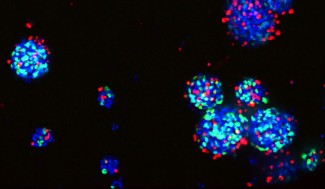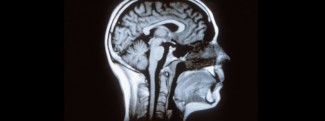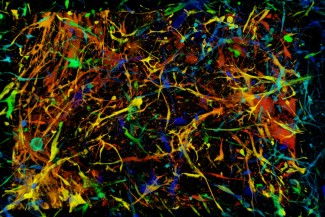Gliomas are malignant tumors that develop from glial cells, which are cells that support neurons, maintain their balance, and provide them with the oxygen and nutrients they need to function. Gliomas account for 34% of brain tumors.
Diffuse gliomas, which invade the entire brain, are the most common type.
On distingue plusieurs types de gliomes selon le type de cellules qui prolifèrent et constituent la tumeurs.
- Les astrocytomes qui se développent à partir des astrocytes, cellules localisées dans tout le cerveau dont le rôle est essentiel dans le développement, le fonctionnement et la protection du cerveau.
- Les oligodendrogliomes qui se développent à partir des oligodendrocytes, cellules localisées dans n’importe quelle partie du système nerveux central et de la moelle épinière, dont le rôle principal est de formée une gaine protectrice autour des neurones, la myéline.
- Les glioblastomes est un cancer du cerveau agressif et rare, qui touche surtout les adultes de 45 à 70 ans.
- Les épendymomes qui se développe à partir des cellules épithéliales des ventricules et des canaux permettant le passage du liquide céphalorachidien dans la moelle épinière.
There are several types of gliomas, depending on the type of cells that proliferate and form the tumors.
- Astrocytomas develop from astrocytes, cells found throughout the brain that play a vital role in its development, function, and protection.
- Oligodendrogliomas develop from oligodendrocytes, cells located in any part of the central nervous system and the spinal cord, which have the primary role of forming a protective sheath around neurons, called myelin.
- Glioblastoma is an aggressive and rare form of brain cancer that mainly affects adults between the ages of 45 and 70.
- Ependymomas develop from epithelial cells in the ventricles and channels that allow cerebrospinal fluid to flow through the spinal cord.
The diagnosis of gliomas is based primarily on an MRI, followed by a biopsy, which is then subject to conventional pathological analysis of cell morphology and DNA sequencing of tumor cells.
In approximately 40% of gliomas, the cancer cells have a mutation in the IDH gene. This gene is associated with an accumulation of a specific molecule, called 2HG, inside the cells.
Treatments vary depending on the type of glioma.
Astrocytomas and glioblastomas
Treatment involves surgery to remove as much of the tumor as possible without damaging healthy brain tissue, radiation therapy, and chemotherapy to reduce the tumor size.
After conventional multimodal treatment, survival rates for glioblastomas are approximately 50% at one year, 25% at two years, and 10%-15% at five years. The prognosis is better for patients under the age of 45, or if surgery removes all of the tumor or if the tumor cells have a mutation in the IDH1 gene.
With conventional treatment, the median survival time is approximately 26 months for astrocytoma.
Diffuse midline gliomas
In patients with diffuse midline gliomas, radiation therapy can slow the progression of the disease, although its use is mainly palliative, as survival is generally less than a year.
Ependymomas
In general, through surgery, radiation therapy, and chemotherapy, the overall five-year survival rate is approximately 50%. However, the five-year survival rate is higher in patients who have no residual tumor.
The work of Isabelle Leroux, a CNRS researcher in the BRIGHT: Brain Tumor Heterogeneity, Immunity and Therapy team, shows that eliminating senescent cells, which are cells that have stopped dividing, could alter the tumor ecosystem and slow its progression. These results open up new treatment possibilities. These cells, which are located mainly in areas where malignant cells proliferate, secrete numerous molecules that contribute to the irrigation of cancerous tissue and therefore promote the proliferation of tumor cells. “Ultimately, we could consider treating patients with molecules that destroy senescent cells.” Isabelle Leroux, CNRS researcher at Paris Brain Institute.








